St Petersburg is rightfully proud of its magnificent Orthodox cathedrals
By Ekaterina Grigorieva
Every historic building has its own unique fate. Every cathedral in St Petersburg has it too – often complex, sometimes tragic. Many masterpieces of great architects went through the trials of fire, war and militant atheism… But they survived and today they delight the hearts of people.
Saints Peter and Paul Cathedral
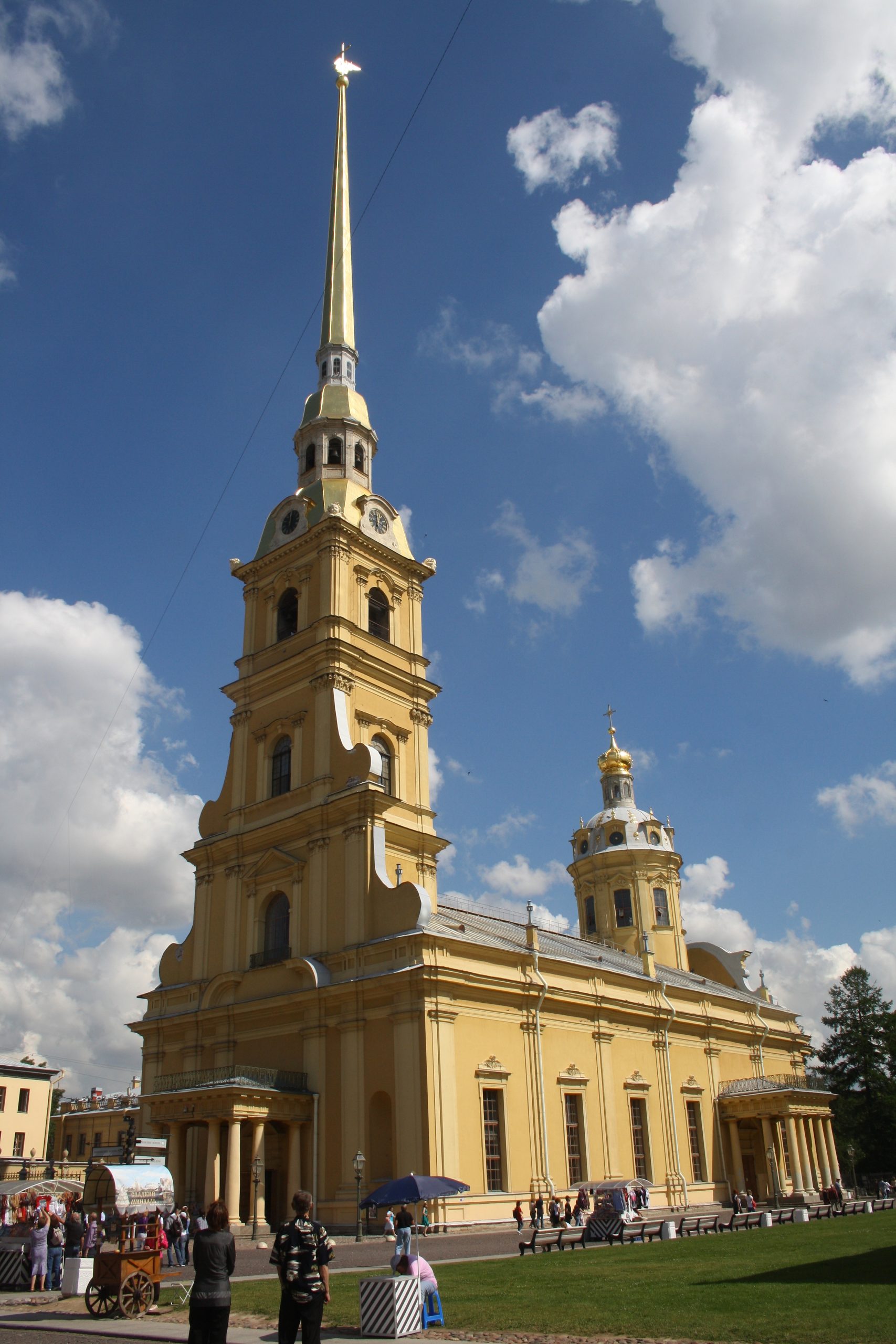 The first wooden church of Saints Peter and Paul was built in 1703–1704 on the territory of the newly founded Peter and Paul Fortress. Eight years later it was decided to build a stone cathedral here, but in such a way that the wooden church would remain inside the new building. The building of a new church designed by the architect Domenico Trezzini was finished in 1732. The Cathedral of Saints Peter and Paul, 122.5 metres (401 feet) high, dominated St Petersburg till 2012, when residential skyscrapers were built in the city.
The first wooden church of Saints Peter and Paul was built in 1703–1704 on the territory of the newly founded Peter and Paul Fortress. Eight years later it was decided to build a stone cathedral here, but in such a way that the wooden church would remain inside the new building. The building of a new church designed by the architect Domenico Trezzini was finished in 1732. The Cathedral of Saints Peter and Paul, 122.5 metres (401 feet) high, dominated St Petersburg till 2012, when residential skyscrapers were built in the city.
In 1924, the building of the cathedral received the status of a museum, but since 2000 services have been held there again. The cathedral houses the burial vault of the Romanov Dynasty.
Cathedral of the Exaltation of the Holy Cross
The first church, the predecessor of the Cathedral of the Exaltation of the Cross in St Petersburg, appeared shortly after the foundation of the city and was wooden. The three-aisled stone church was erected in 1740. Its main altar was dedicated to the Exaltation of the Holy Cross, the north altar – to St Nicholas and the west one – to St John the Baptist. A bell tower was built over the western porch, and the Church of the Tikhvin Icon was built behind the sanctuary.
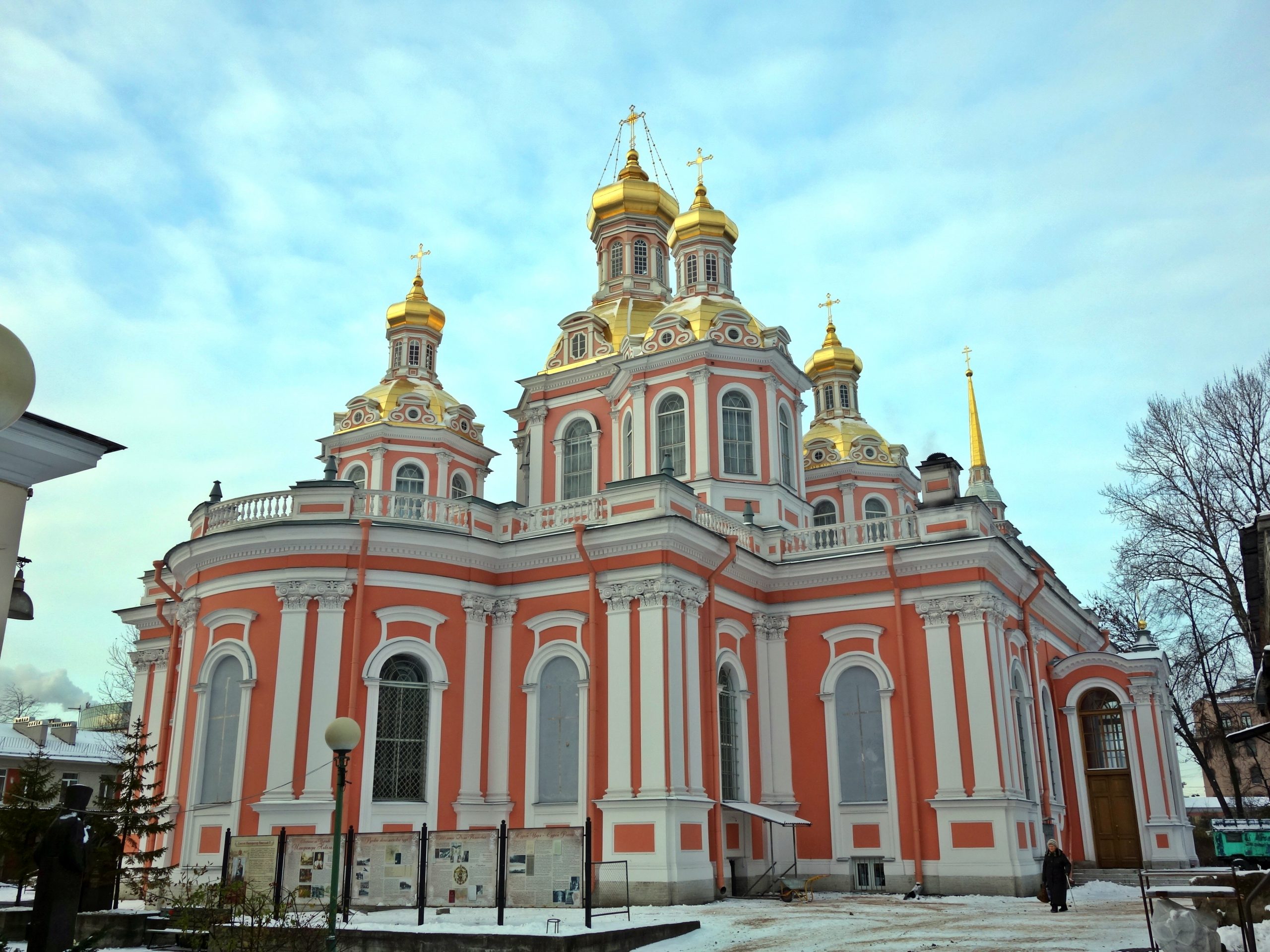 In the mid-nineteenth century the Church of the Exaltation of the Cross was rebuilt by the architect Yegor Dimetr. In 1872 a small Church of the holy Equal-to-the-Apostles Cyril and Methodius was built on the bell tower’s second storey.
In the mid-nineteenth century the Church of the Exaltation of the Cross was rebuilt by the architect Yegor Dimetr. In 1872 a small Church of the holy Equal-to-the-Apostles Cyril and Methodius was built on the bell tower’s second storey.
In the Soviet era the church was closed and converted into restoration workshops. The church was badly damaged during the Second World War.
The church was revived in 1991.
Saint Nicholas Naval Cathedral
St Nicholas Naval Cathedral on the banks of the Kryukov Canal is a unique architectural monument. Built in the Baroque style, it consists of two churches: the upper Theophany Church and the lower one in honour of St Nicholas the Wonderworker of Myra, a patron-saint of sailors.
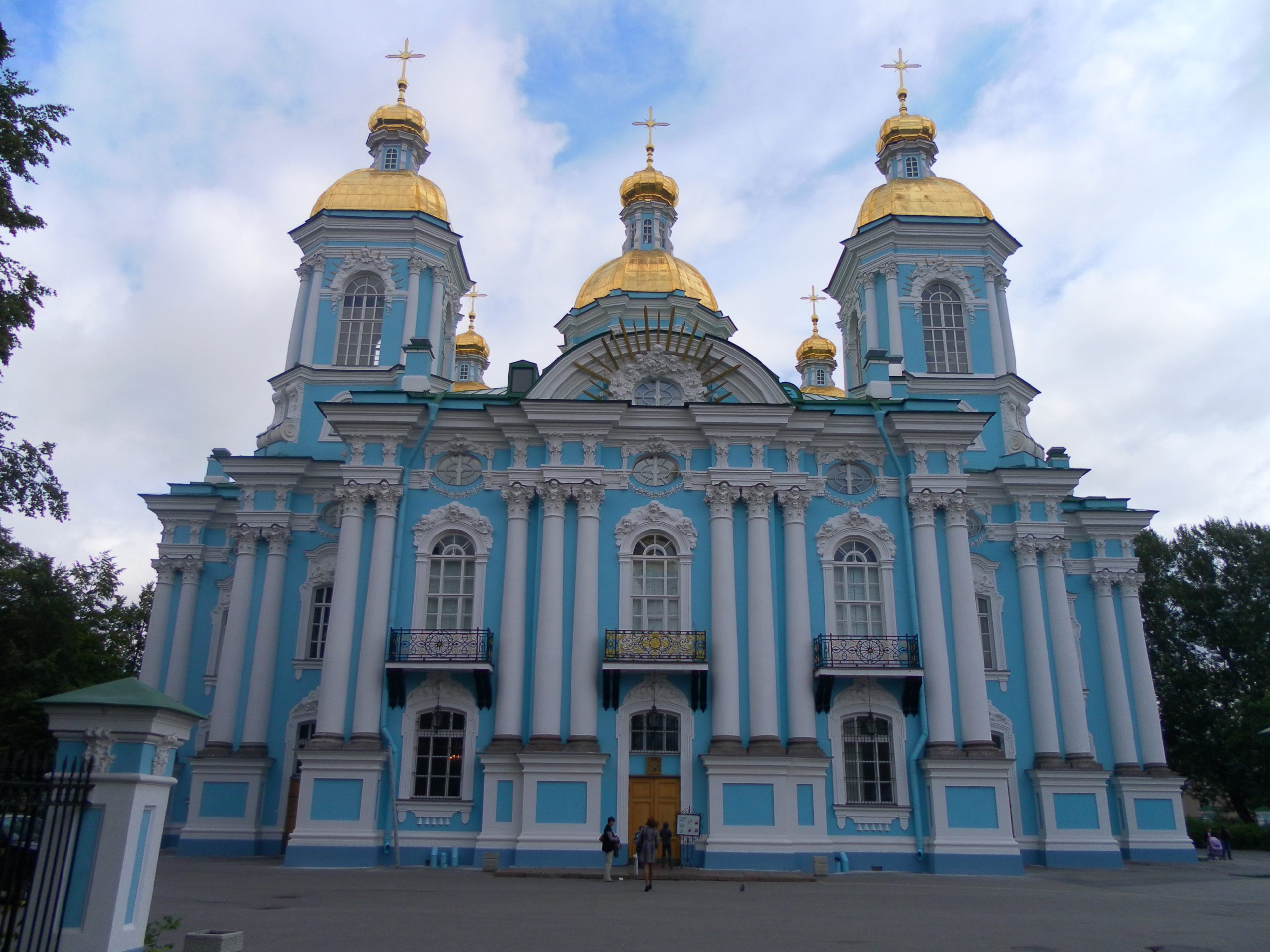 The initiator of the building of the church was General-Admiral Mikhail Golitsyn, who applied with a petition to Empress Elizabeth Petrovna and she granted him permission. Building work to the design of the architect Savva Chevakinsky, begun on 15th July, 1753, was completed nine years later under Catherine II as a cathedral of extraordinary beauty. The Empress presented the cathedral with ten icons depicting the saints, on whose feast-days the Russian Navy had won victories over the Ottomans. From the very beginning St Nicholas Naval Cathedral became a monument of Russia’s maritime glory.
The initiator of the building of the church was General-Admiral Mikhail Golitsyn, who applied with a petition to Empress Elizabeth Petrovna and she granted him permission. Building work to the design of the architect Savva Chevakinsky, begun on 15th July, 1753, was completed nine years later under Catherine II as a cathedral of extraordinary beauty. The Empress presented the cathedral with ten icons depicting the saints, on whose feast-days the Russian Navy had won victories over the Ottomans. From the very beginning St Nicholas Naval Cathedral became a monument of Russia’s maritime glory.
Saint Andrew’s Cathedral
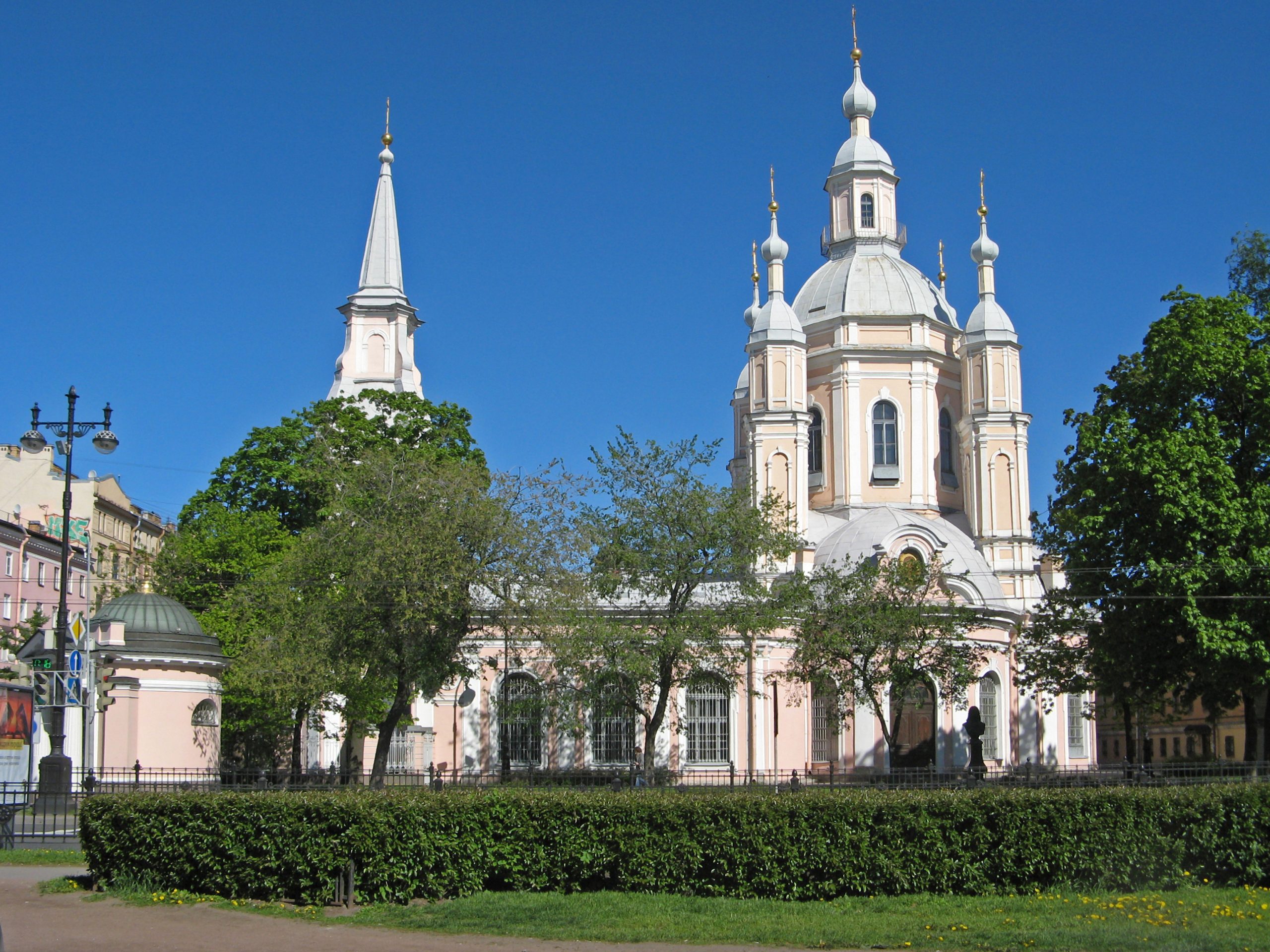 Saint Andrew’s Cathedral on Vasilyevsky Island was founded in 1764 to the design of A.F. Vist (according to another version – A.A. Ivanov) on the site of a wooden church that had burned down in 1761 (that church had been built to the design of Giuseppe Trezzini and consecrated in October 1732 by Archbishop Theophan Prokopovich).
Saint Andrew’s Cathedral on Vasilyevsky Island was founded in 1764 to the design of A.F. Vist (according to another version – A.A. Ivanov) on the site of a wooden church that had burned down in 1761 (that church had been built to the design of Giuseppe Trezzini and consecrated in October 1732 by Archbishop Theophan Prokopovich).
The new three-aisled stone St Andrew’s Cathedral was consecrated in the spring of 1780 and became the chivalric order’s cathedral under Paul I, in connection with which the insignia of the Order of St Andrew the First-Called was put up above the entrance.
The cathedral was closed in the summer of 1938, but was protected by the State as an architectural monument. The seventeenth-century carved iconostasis has survived to this day. In 1992 the cathedral was returned to the St Petersburg’s Metropolis.
Cathedral of the Vladimir Icon of the Mother of God
The building of the Cathedral of the Vladimir Icon of the Mother of God on the site of the wooden church of the same name in Torgovaya Square (now called Vladimirskaya Square) began in August 1761. The design is attributed to Pietro Trezzini, though there is an opinion that it might have been Christian Knobel. The free-standing bell tower was designed by Giacomo Quarenghi.
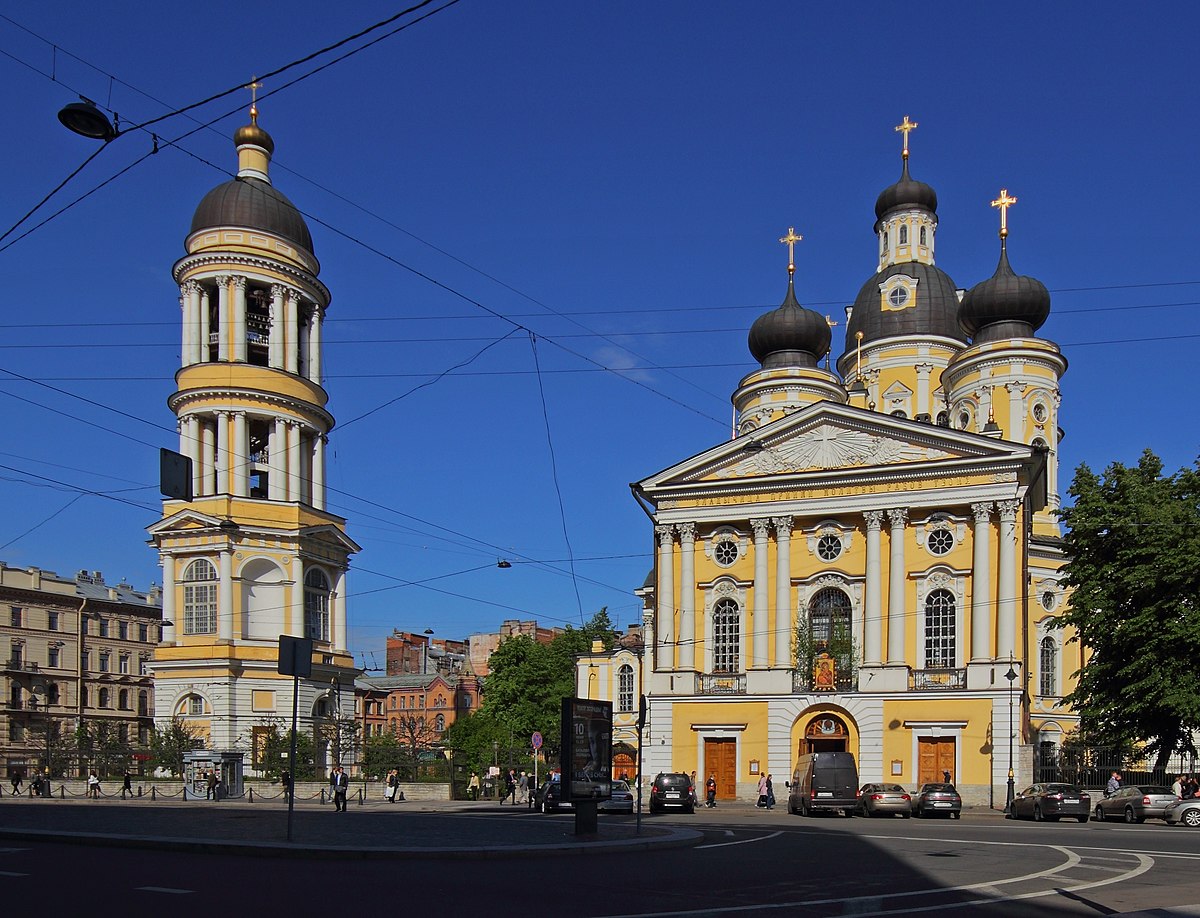 The church was consecrated on 9th April, 1783 in honour of one of the most venerated icons in Rus’ – the Vladimir Icon of the Mother of God. According to church tradition, the icon was painted by Luke the Evangelist on the board of the table at which the Holy Family used to eat. The icon was brought to Russia from the Byzantine Empire by Prince Yuri Dolgoruky, who received it as a gift from Patriarch Luke Chrysoberges of Constantinople.
The church was consecrated on 9th April, 1783 in honour of one of the most venerated icons in Rus’ – the Vladimir Icon of the Mother of God. According to church tradition, the icon was painted by Luke the Evangelist on the board of the table at which the Holy Family used to eat. The icon was brought to Russia from the Byzantine Empire by Prince Yuri Dolgoruky, who received it as a gift from Patriarch Luke Chrysoberges of Constantinople.
The icon was kept in the Convent of the Mother of God near Kiev, and then at the Dormition Cathedral in the city of Vladimir, where it was moved by Yuri Dolgoruky’s son Andrei Bogolyubsky. This is how the icon got its name.
In 1395, the icon was brought to Moscow to protect it from the invasion of Timur. Since 1999 the miracle-working icon has been kept at St Nicholas Church in Tolmachi at the Tretyakov Gallery in Moscow.
In 1930 the Cathedral of the Vladimir Icon of the Mother of God was closed. For a long time, it was occupied by a knitting mill, but since 1990 services have been celebrated at the church again.
Prince St. Vladimir’s Cathedral
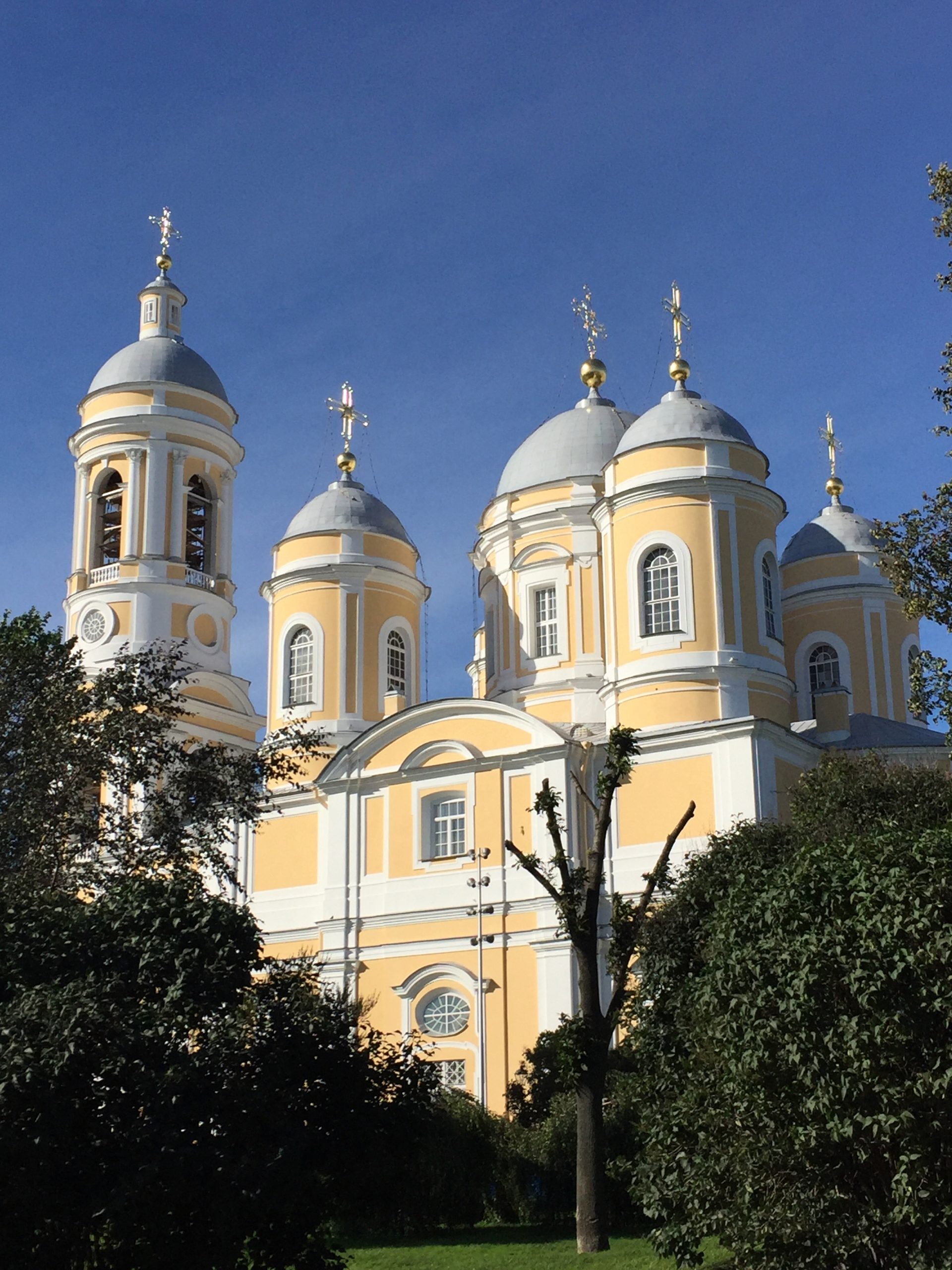 The Prince St. Vladimir’s Cathedral was founded in St. Petersburg in 1740 by decree of Empress Anna Ioannovna next to the clay-walled Dormition Church. However, after the accession to the throne in 1741 of Elizabeth Petrovna, the youngest daughter of Peter the Great, work stopped and was not resumed until 1766, when the architect Antonio Rinaldi made a new design for the church. In 1773 building was interrupted again by a fire and was not resumed until ten years later under the supervision of the architect Ivan Starov. On 1st October, 1789, the new cathedral was consecrated in honour of the holy Prince Vladimir.
The Prince St. Vladimir’s Cathedral was founded in St. Petersburg in 1740 by decree of Empress Anna Ioannovna next to the clay-walled Dormition Church. However, after the accession to the throne in 1741 of Elizabeth Petrovna, the youngest daughter of Peter the Great, work stopped and was not resumed until 1766, when the architect Antonio Rinaldi made a new design for the church. In 1773 building was interrupted again by a fire and was not resumed until ten years later under the supervision of the architect Ivan Starov. On 1st October, 1789, the new cathedral was consecrated in honour of the holy Prince Vladimir.
Cathedral of the Kazan Icon
The Cathedral of the Kazan Icon was built in Nevsky Avenue by order of Emperor Paul I on the site of the dilapidated Church of the Nativity of the Mother of God, where the wonderworking Kazan Icon of the Mother of God was kept – one of the most beloved Orthodox relics. According to the plan of Paul I, the cathedral was supposed to be as magnificent and harmonious as St Peter’s Cathedral in Rome.
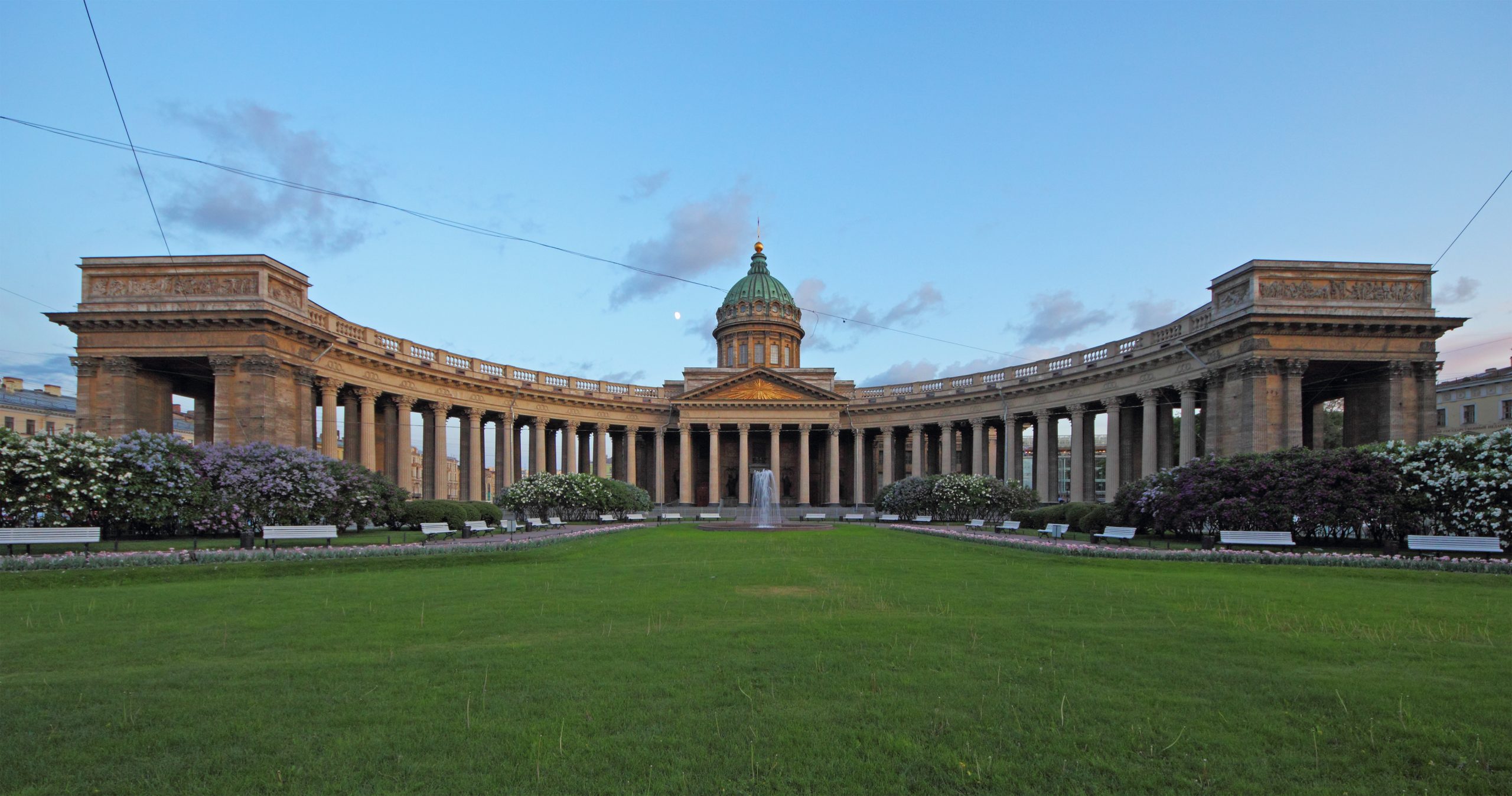 In 1811 the church, built in the style of Russian classicism by the architect Andrei Voronikhin, was dedicated to the Kazan Icon of the Mother of God.
In 1811 the church, built in the style of Russian classicism by the architect Andrei Voronikhin, was dedicated to the Kazan Icon of the Mother of God.
The cathedral was built just before the French invasion of Russia in 1812. It was here that the great military commander Mikhail Golenishchev-Kutuzov prayed in front of the wonderworking icon before setting off to the troops near Smolensk and was buried in 1813.
After the victory over Napoleon the Cathedral of the Kazan Icon was regarded as a monument of Russian military glory. Monuments to the field marshals of the 1812 War – Mikhail Kutuzov and Michael Barclay de Tolly – were set up in the square in front of the church.
Transfiguration Cathedral
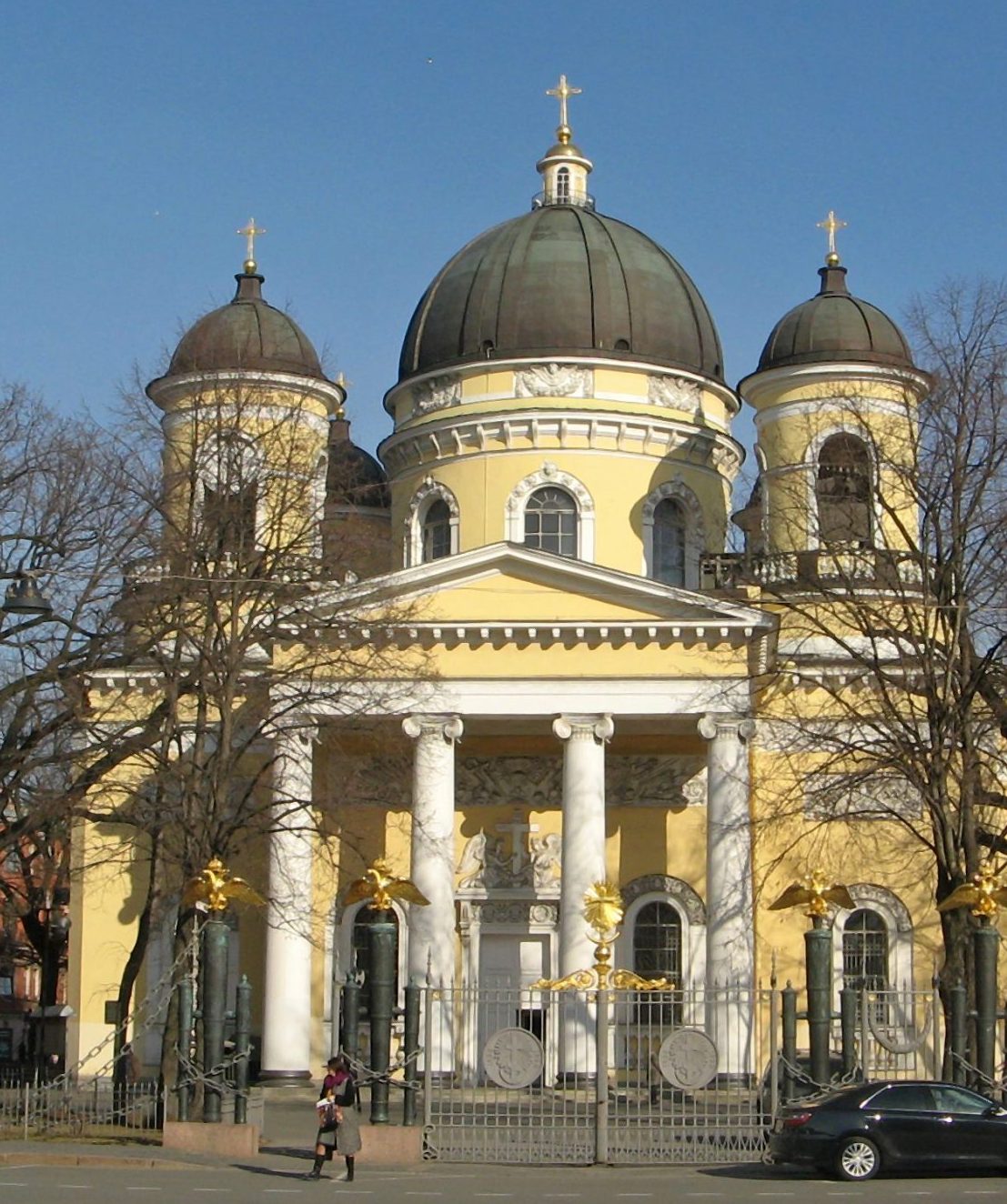 The Cathedral of the Transfiguration of the Saviour was built in 1829 to the design of Vasily Stasov in the Empire style on the site of an earlier church that had been destroyed in a fire that had broke out on 8th August, 1825. The restored church was re-consecrated on 5th August, 1829 by Metropolitan Seraphim (Glagolevsky).
The Cathedral of the Transfiguration of the Saviour was built in 1829 to the design of Vasily Stasov in the Empire style on the site of an earlier church that had been destroyed in a fire that had broke out on 8th August, 1825. The restored church was re-consecrated on 5th August, 1829 by Metropolitan Seraphim (Glagolevsky).
After the Russian Revolution the church remained active, and during the Siege of Leningrad a bomb shelter was opened in its vault.
Holy Trinity-Izmailovsky Cathedral
The history of the Holy Trinity-Izmailovsky Cathedral is directly connected with the formation of the Life Guards of the Izmailovsky Regiment in 1730, during which a camp church-tent was set up, which, by order of Empress Anna Ioannovna, was consecrated on 12th July, 1733 in honour of the Holy Trinity.
Ten years later, the regimental church was moved to a permanent place in St Petersburg – initially on Admiralteysky Island, and then in Izmailovsky Avenue. In 1754 the foundation of a new wooden five-domed church was laid. However, it was badly damaged due to the flood of 1824, as a result of which it was decided to build a new stone church. The architect Vasily Stasov was supposed to take the former wooden church as a model.
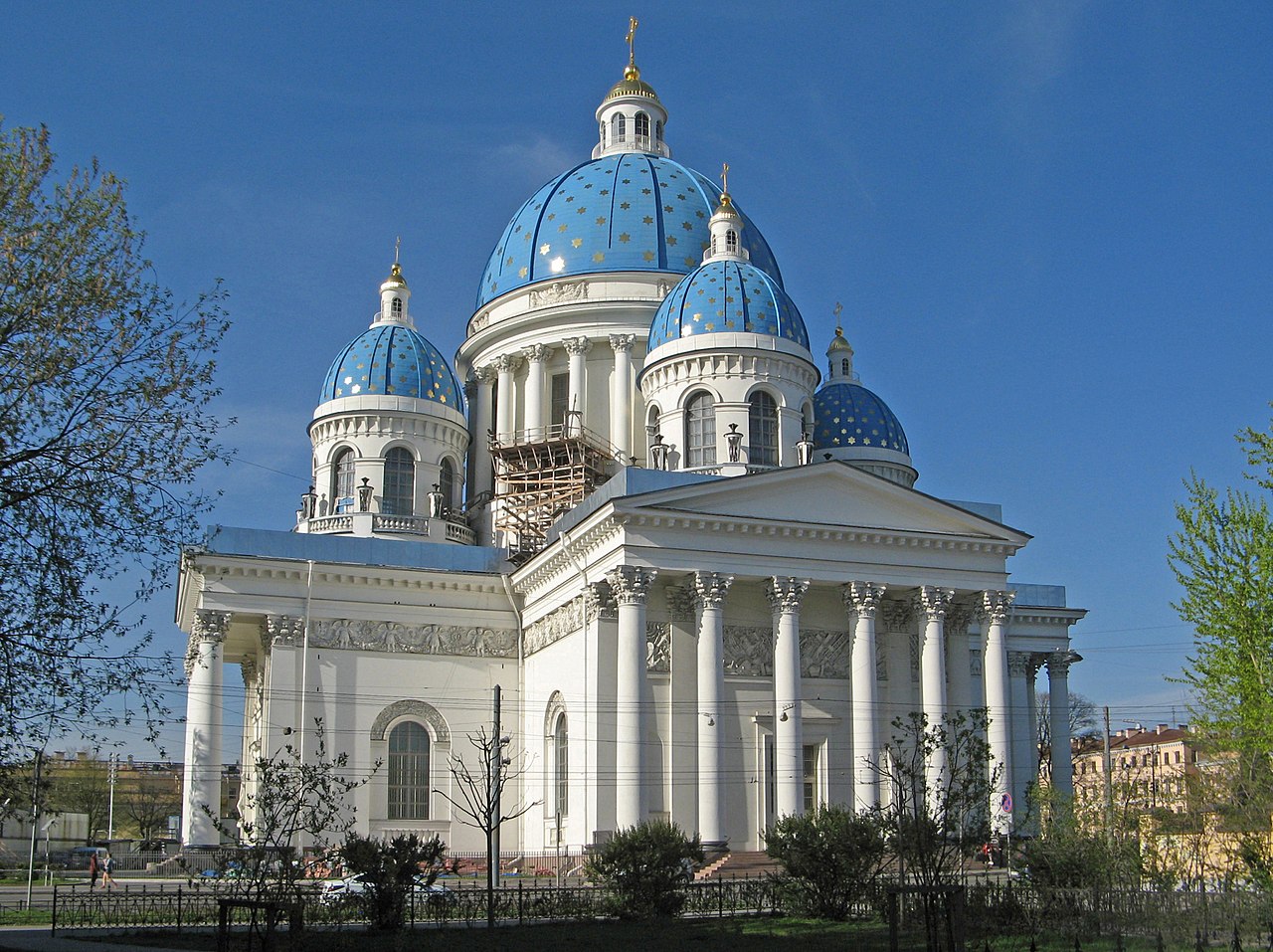 The foundation stone of the new church was laid on 25th May, 1828 by Metropolitan Seraphim (Glagolevsky). The ceremony was attended by Empress consort Maria Feodorovna and Tsarevich Alexander Nikolaevich. The church was completed in 1835; it was consecrated by Metropolitan Philaret (Drozdov) of Moscow.
The foundation stone of the new church was laid on 25th May, 1828 by Metropolitan Seraphim (Glagolevsky). The ceremony was attended by Empress consort Maria Feodorovna and Tsarevich Alexander Nikolaevich. The church was completed in 1835; it was consecrated by Metropolitan Philaret (Drozdov) of Moscow.
On 22nd April, 1938, the cathedral was closed – they were going to demolish it or rebuild it as a crematorium, but with the outbreak of the Second World War the building was occupied by a warehouse.
The church was returned to the Russian Orthodox Church in 1990. On 25th August, 2006, during the restoration work, the scaffolding caught fire. As a result of a strong fire, the external structures of the large dome collapsed, and two small domes, already restored by that time, were damaged as well. The unique church was completely renovated in 2017.
Saint Isaac’s Cathedral
The magnificent St. Isaac’s Cathedral – one of the largest domed structures in the world – was rebuilt more than once. This is the fourth edifice, dedicated to the Venerable Isaac of Dalmatia, a saint who was venerated by Peter the Great, who was born on the saint’s feast – 30th May according to the Julian calendar.
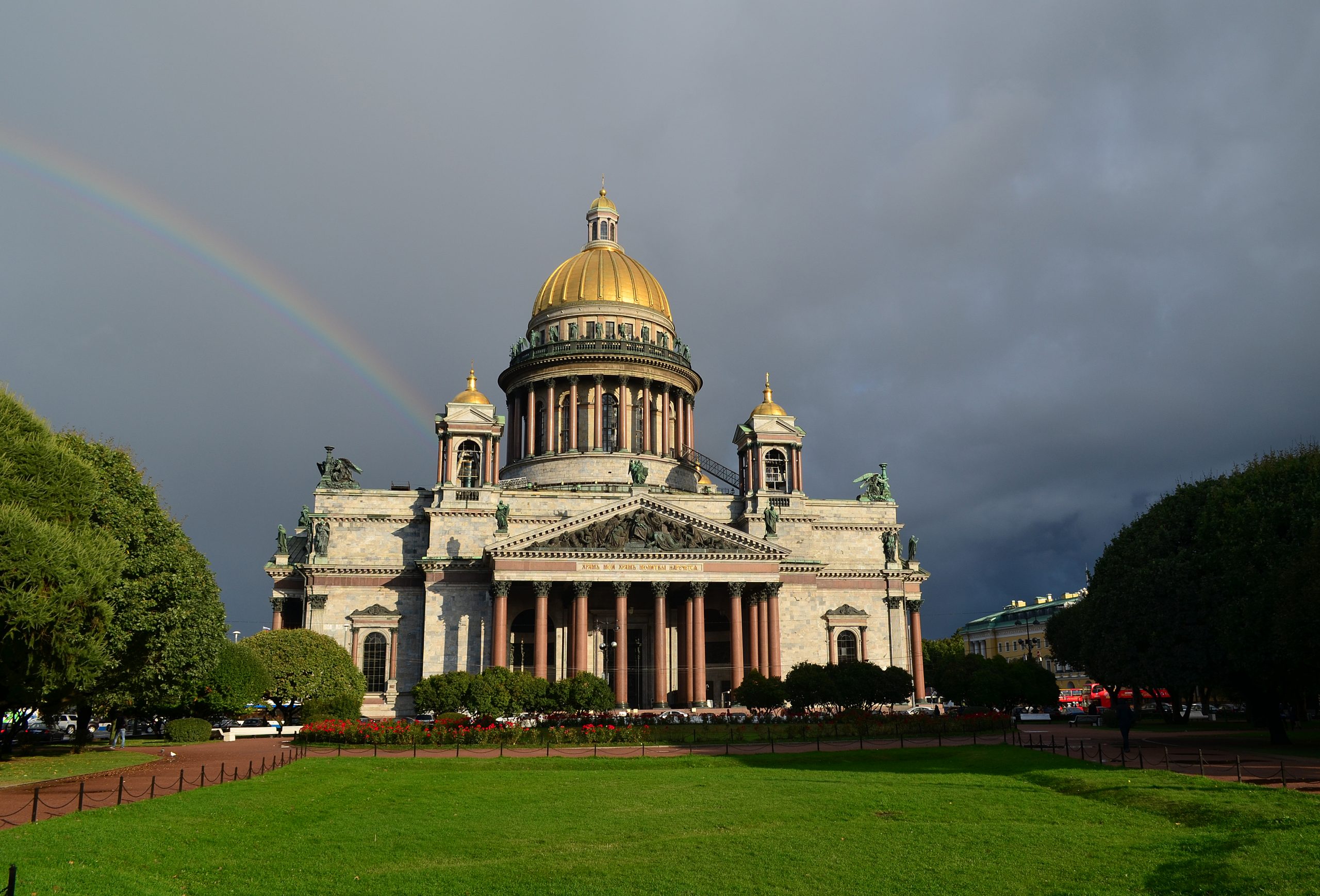 The first wooden church was built on the banks of the Neva, near the Admiralty, and consecrated in 1710. In 1717 the building of a stone church commenced nearby, but work had to be stopped due to subsidence.
The first wooden church was built on the banks of the Neva, near the Admiralty, and consecrated in 1710. In 1717 the building of a stone church commenced nearby, but work had to be stopped due to subsidence.
Under Catherine II the new St Isaac’s Cathedral, designed by Antonio Rinaldi, was built at a distance from the bank of the Neva, but this building was far from perfect.
In 1809 Emperor Alexander I announced a competition for the building of a new church. St Isaac’s Cathedral, which was built between 1818 and 1858, became a magnificent masterpiece of the French architect Auguste de Montferrand and one of the main symbols of St Petersburg.
Church of the Resurrection of Christ on Spilled Blood
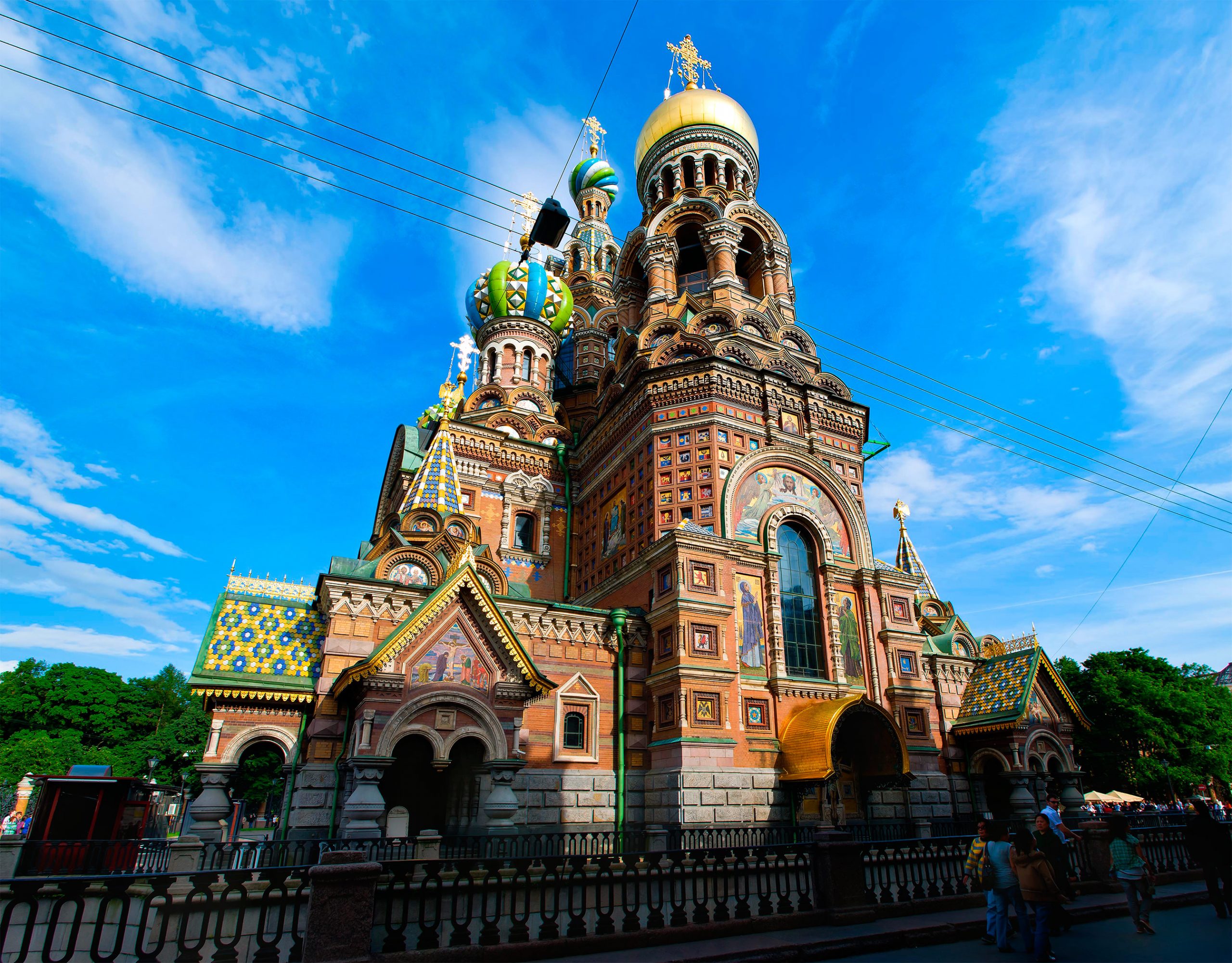 The Church of the Resurrection of Christ, popularly known as ‘the Saviour’s Church on the Blood’, was built on the site where Emperor Alexander II was mortally wounded on 1st March, 1881. The cathedral was built to resemble outwardly the Moscow St Basil’s (the Holy Protection) Cathedral by order of Alexander III in 1883–1907 to the design of the architect Alfred Parland and Archimandrite Ignatius (Malyshev).
The Church of the Resurrection of Christ, popularly known as ‘the Saviour’s Church on the Blood’, was built on the site where Emperor Alexander II was mortally wounded on 1st March, 1881. The cathedral was built to resemble outwardly the Moscow St Basil’s (the Holy Protection) Cathedral by order of Alexander III in 1883–1907 to the design of the architect Alfred Parland and Archimandrite Ignatius (Malyshev).
Feodorovskaya Icon Cathedral
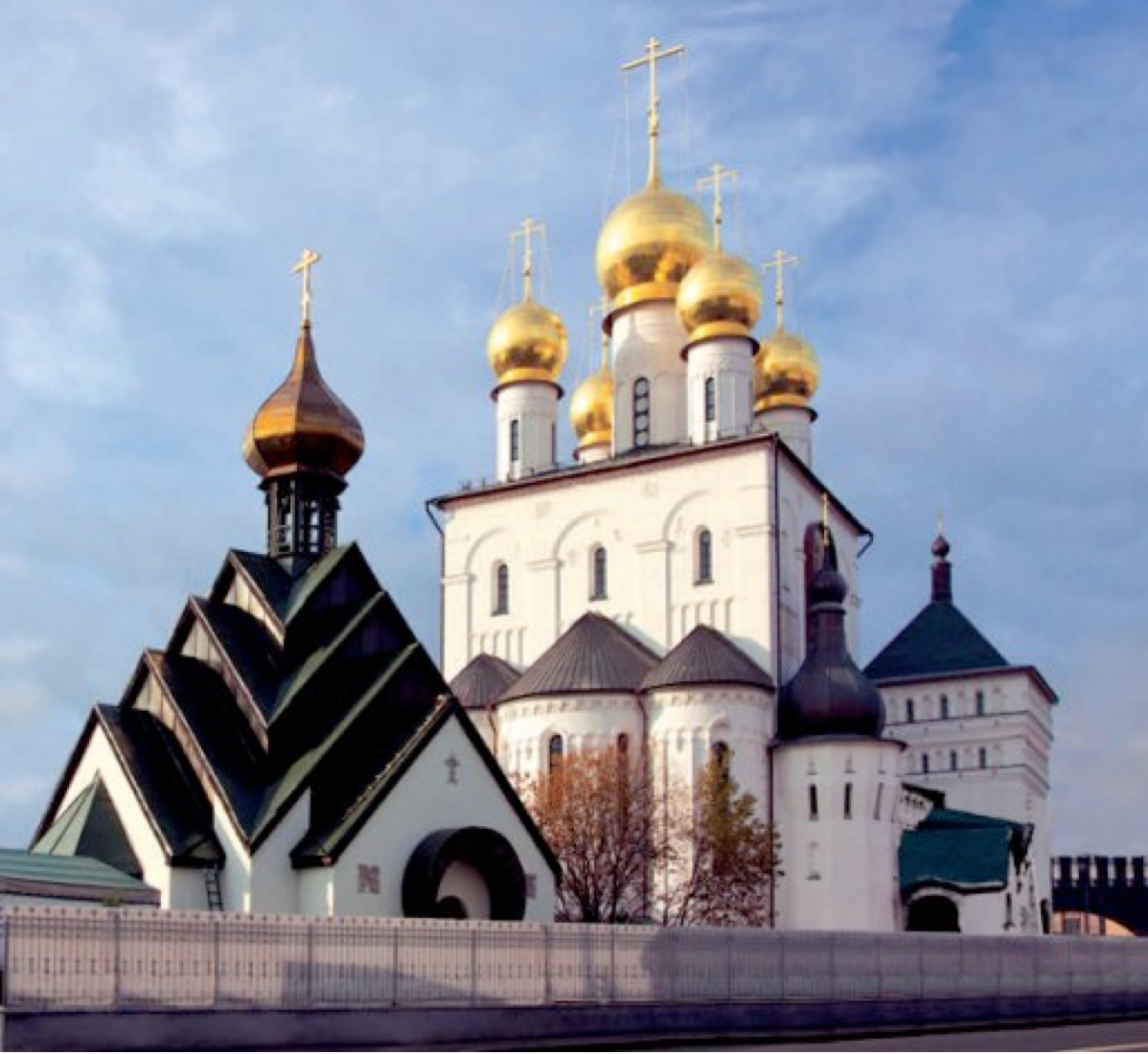 The building of the Cathedral of the Feodorovskaya Icon, designed by the architect Stepan Krichinsky, began in 1907 in connection with the approaching 300th anniversary of the Romanov Dynasty. The foundation stone of the church was laid on 5th August, 1911 in the presence of Grand Duke Mikhail Alexandrovich.
The building of the Cathedral of the Feodorovskaya Icon, designed by the architect Stepan Krichinsky, began in 1907 in connection with the approaching 300th anniversary of the Romanov Dynasty. The foundation stone of the church was laid on 5th August, 1911 in the presence of Grand Duke Mikhail Alexandrovich.
After the Russian Revolution the church went through many trials – it was rebuilt, converted into a dairy factory, and its domes were demolished…
The church was returned to the metropolis in August 2005. Work on the rebuilding of the historic monument was completed in 2013 – on the occasion of the centenary of its building and the 400th anniversary of the Romanov Dynasty.




